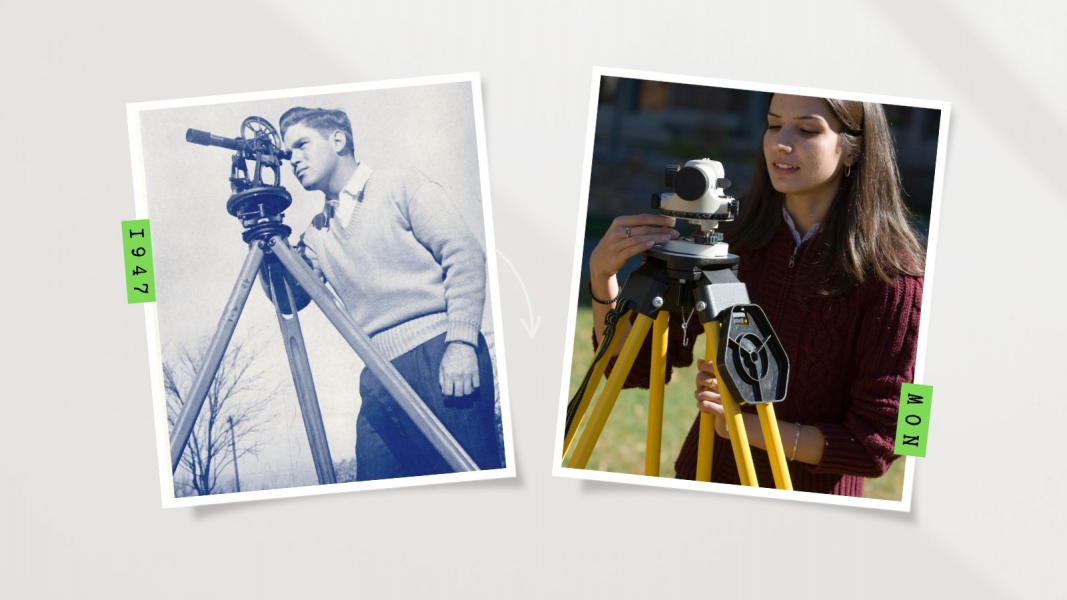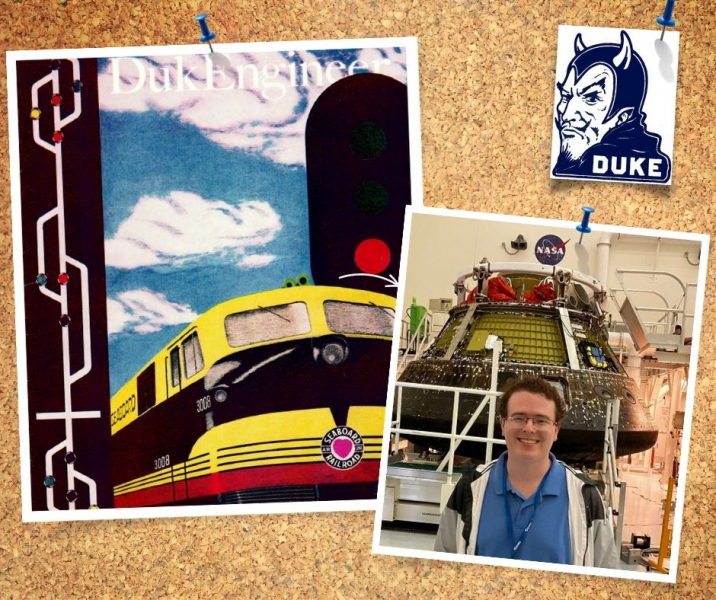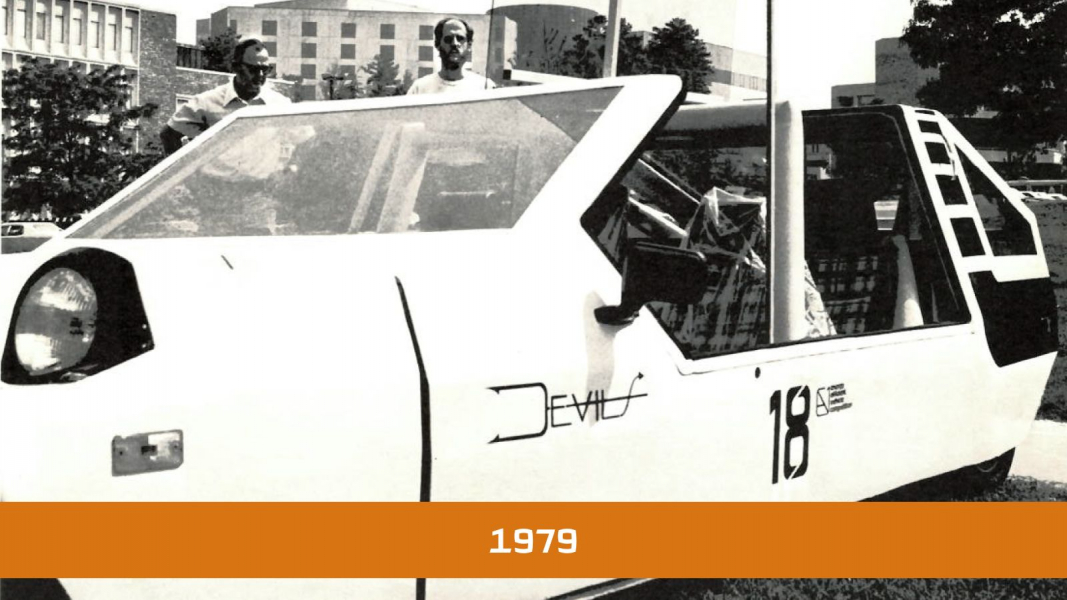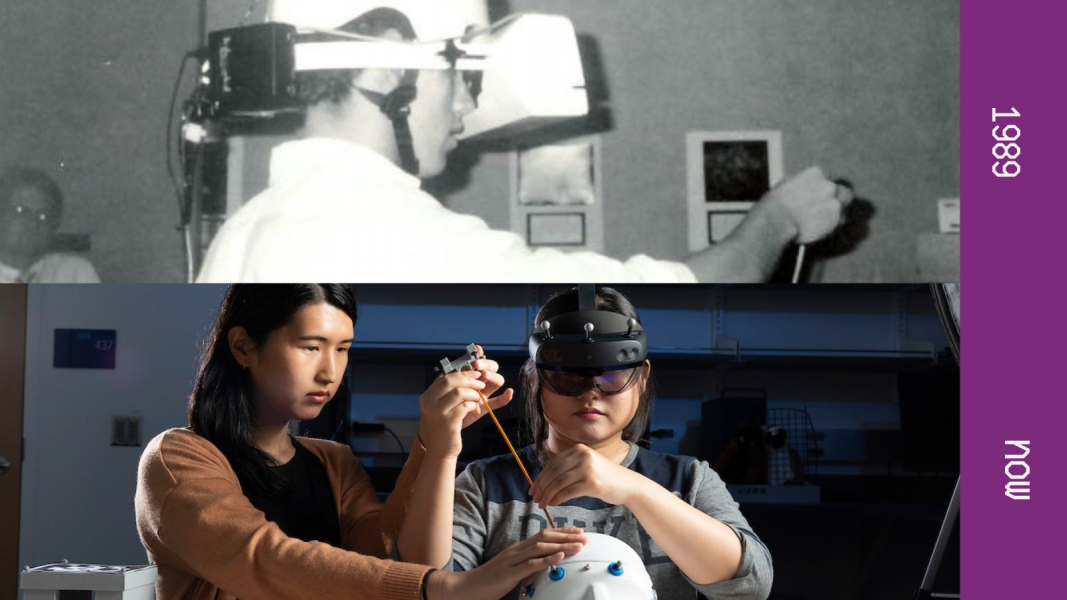Duke Engineering: Then & Now
As part of National Engineers Week, take a look at how Duke Engineering has changed and grown over the years
A storage closet on the top floor of Duke’s Nello L. Teer Building houses an archival treasure: a collection of DukEngineer magazines, dating all the way back to 1940.
The crumbling construction paper cover of the earliest issue was illustrated by hand and stapled over folded sheets of type. The student-edited magazine—which was much more of a newsletter at the beginning—detailed the innermost workings of engineering life at Duke, from field trips to social functions, and featured a gossip column called The Dope. (“Robinson is in love … also on the wagon,” reported the first column.)
The magazine has been continuously published ever since and has always been written and produced by students. Taken as a whole, the collection offers valuable insights into the countless ways in which Duke Engineering has grown and changed over time.
1947/now

Civil engineering students still learn a classic skill: surveying, which yields critical information about the terrain and helps engineers understand how to plan a construction project. A student who attended Duke in the 1940s would be surprised to see how Duke Engineering’s own construction projects have mushroomed across West Campus, to house our growing community. Today, the Pratt School of Engineering occupies nearly 400,000 net square feet in 18 buildings on and near Duke’s campus. The newest of these is the Wilkinson Building, which features four collaborative research “neighborhoods” and a student-focused Learning Commons.
1950/now

“It is my opinion that the sooner humans make a trip to the moon, the better the condition of the world will be,” mused civil engineering student Roland Woodfield in 1951. “A trip to the moon, or possibly other planets, would be of such great world interest that nations would stop fighting each other and concentrate on exploring new unknowns.”
Woodfield died in 2021, at the age of 92. Can you imagine the enthusiastic conversations he might have had with recent MEMS 4+1 graduate Patrick Wilson, whose systems engineering work with NASA enabled the Artemis capsule to travel to the moon and back?
1967/now

The April 1967 issue of DukEngineer told the news of a new department at Duke: “bio-medical engineering.” It was one of the first of its kind in the nation.
“This new division will not be cut off from the other branches of engineering but will in fact have its basic success dependent upon its interdisciplinary activity, including its close association with the Medical Center,” explained John Judd ’69 in the article that he wrote to introduce what is now called BME.
Interdisciplinary collaboration and close association with the medical center have remained hallmarks of the program and have grown stronger over the years, keeping pace with the program’s excellent reputation among peers. Duke BME is ranked #3 in the nation for its undergraduate program and #7 in graduate programs, and the department is recognized as the birthplace of real-time ultrasound imaging.
1979/now


Duke Engineering entered the Energy Efficient Vehicle Competition in 1979. The team’s car, the DEVIL (Duke Efficient Vehicle for Innovative Learning) was a three-wheeled hatchback with gull-wing doors. The DEVIL competed against thirty other teams at the General Motors proving ground in Milford, Michigan, but unfortunately experienced debilitating microcomputer malfunctions that removed it from competition.
The DEVIL’s descendant, Maxwell, has fared much better. On July 21, 2018, the Duke Electric Vehicles team set a new Guinness World Record for fuel efficiency. Maxwell, which is a hydrogen-powered vehicle, set the new bar at 14,573 MPG.
1989/now

“Bill Walker used a sophisticated headset which allowed him to view a computer screen in three dimensions,” explained the caption in the 1989 photo above. Walker was a senior biomedical engineering student and NSF ERC fellow, developing biodegradable stents for use in heart surgery. He was hoping to develop a porous surface for the device through which drugs could be delivered to the patient.
Now, students in the Intelligent Internet of Things lab directed by ECE faculty member Maria Gorlatova develop simulations assisted by augmented reality that help train doctors to perform complex procedures on delicate organs, including brains and eyes.
